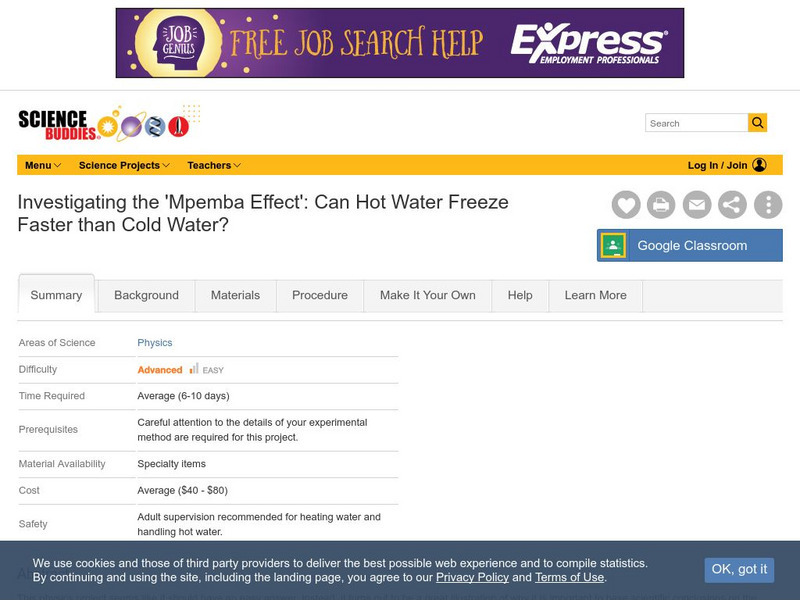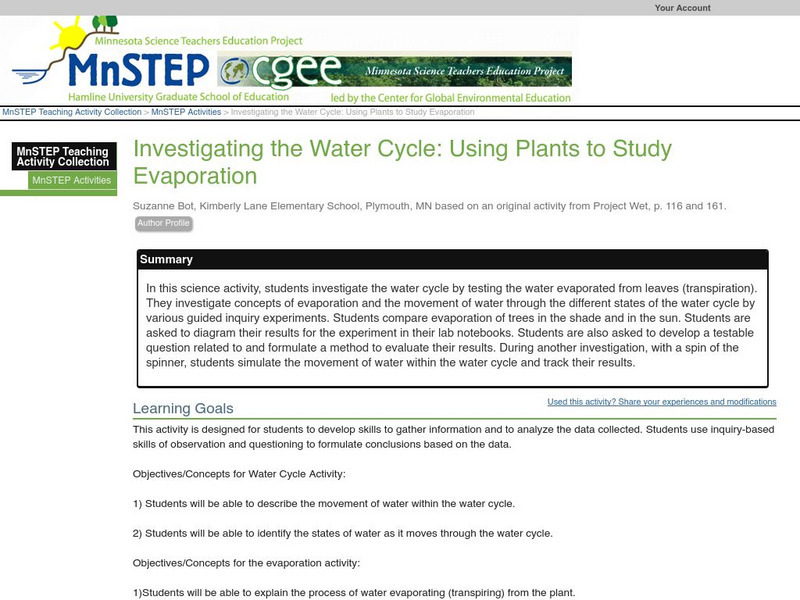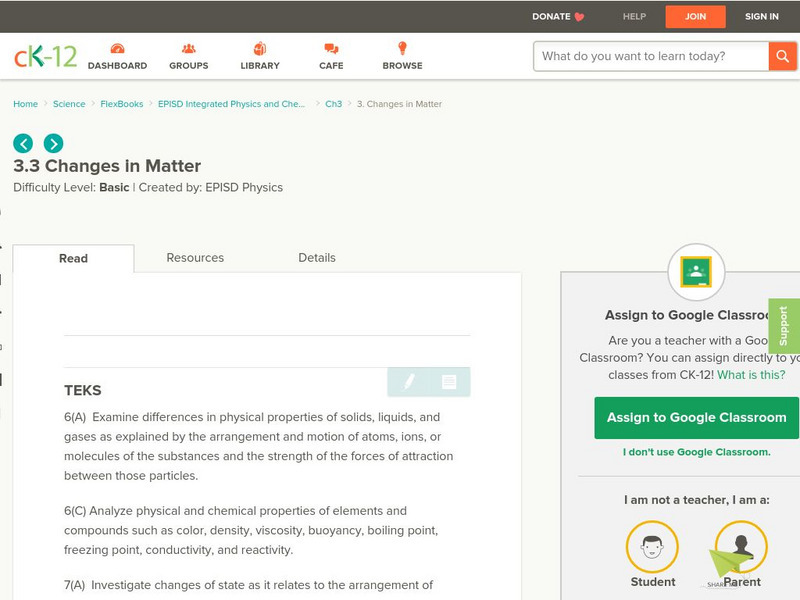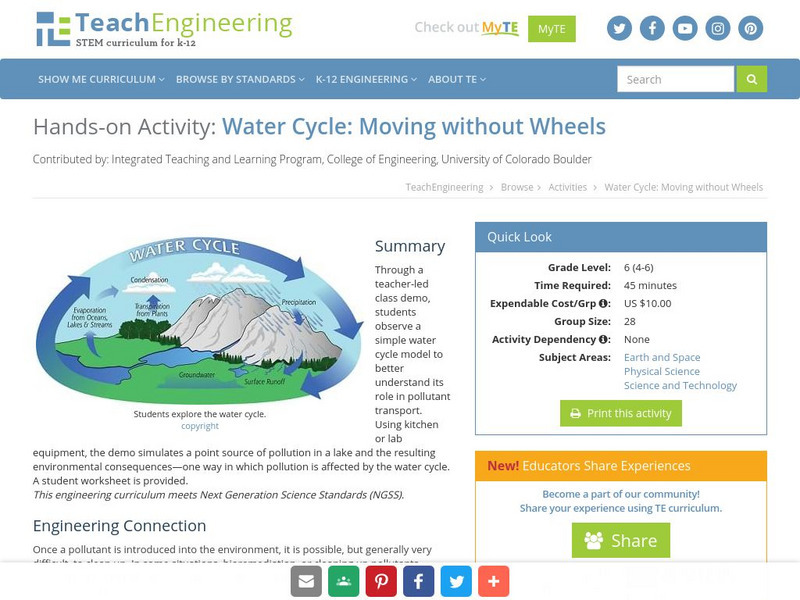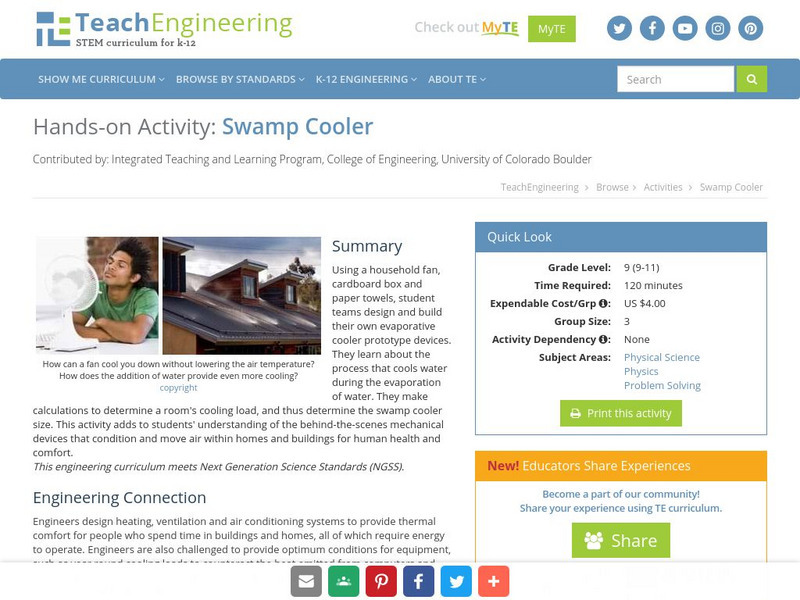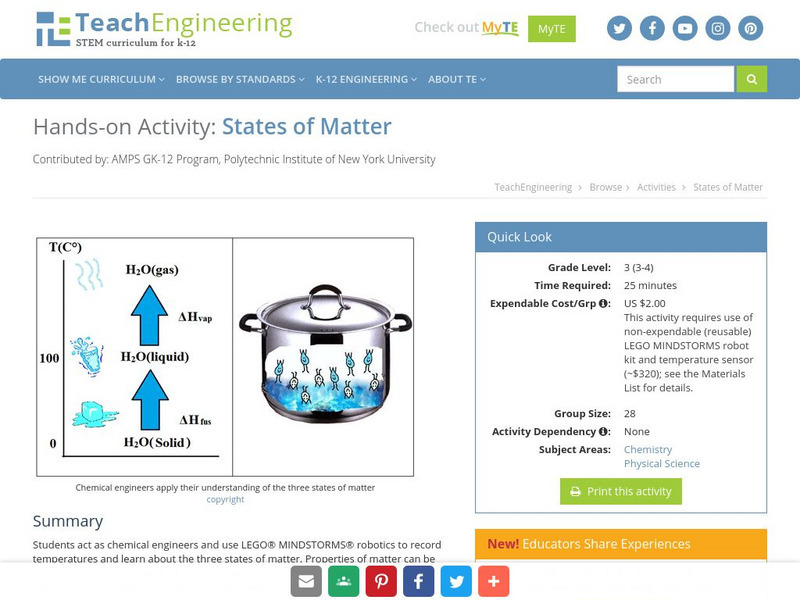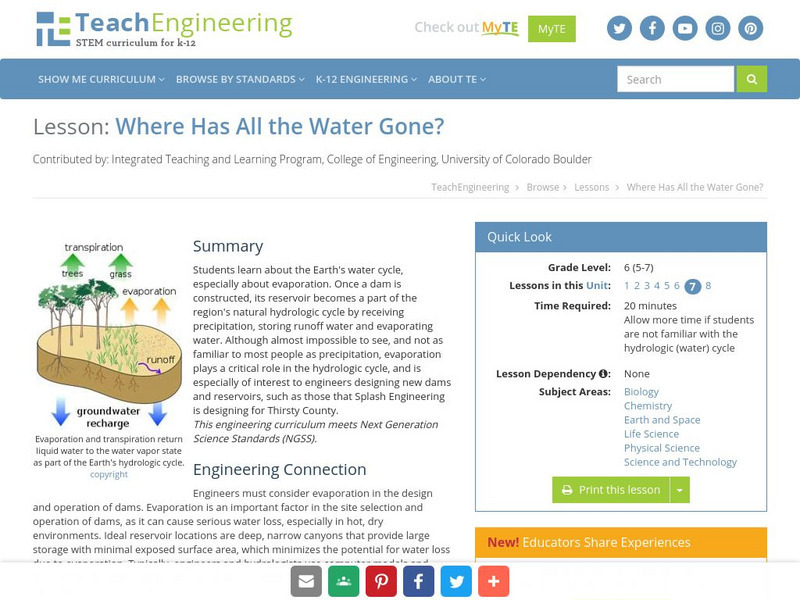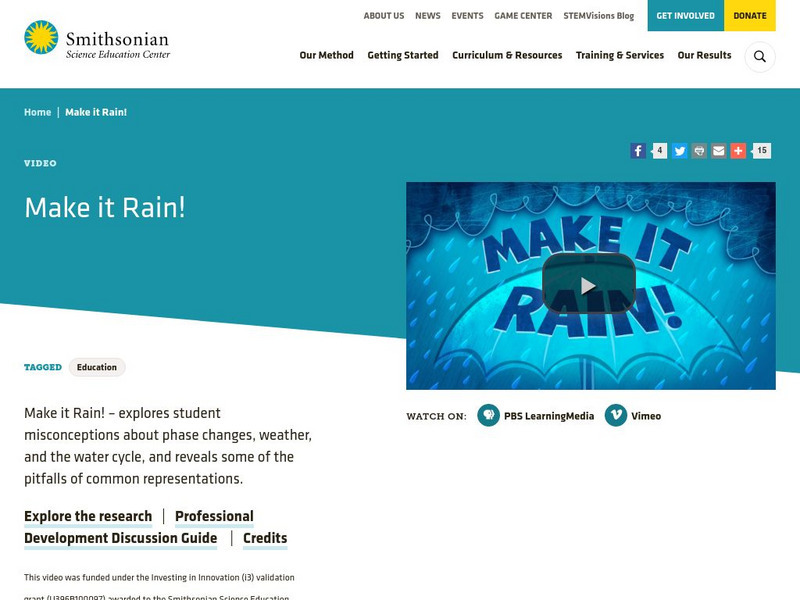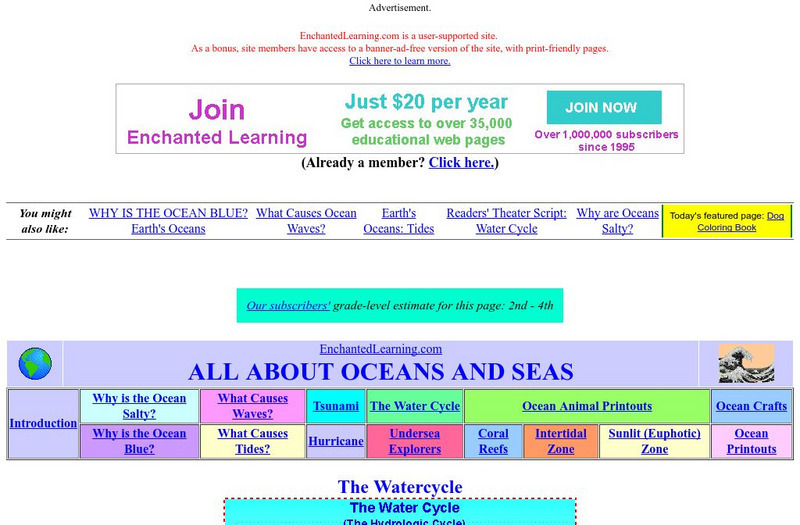TED Talks
Ted: Ted Ed: The Chemistry of Cold Packs
If you stick water in the freezer, it will take a few hours to freeze into ice. How is it, then, that cold packs go from room temperature to near freezing in mere seconds? John Pollard details the chemistry of the cold pack, shedding...
Science Buddies
Science Buddies: Investigate Mpemba Effect Can Hot Water Freeze Faster Than Cold
This physics project seems like it should have an easy answer. Instead, it turns out to be a great illustration of why it is important to base scientific conclusions on the outcome of controlled experiments. Things don't always turn out...
Science Buddies
Science Buddies: What's the Fastest Way to Cool a Soda?
When you are craving an ice cold drink of soda, the last thing you want is to be stuck with a bunch of soda cans at room temperature. This fun science experiment sends you on a discovery to find the fastest way to cool soda with...
Science Buddies
Science Buddies: Keep Your Candy Cool With the Power of Evaporation!
Did you know that your body has a built-in cooler? And it might not be what you think. Sweat is produced when you are hot, but its purpose is actually to cool your body as the water in it evaporates from your skin. In this science fair...
Science Education Resource Center at Carleton College
Serc: Investigating the Water Cycle: Using Plants to Study Evaporation
In this science activity, young scholars investigate the water cycle by testing the water evaporated from leaves (transpiration). They investigate concepts of evaporation and the movement of water through the different states of the...
Science Education Resource Center at Carleton College
Serc: Investigating the Water Cycle "Snow Fun"
In this teacher directed inquiry indoor lab students collect snow in a cup. They will estimate how much water will be in the cup after the snow melts. Students will then make predictions about what will happen to the cup of water. After...
Science Education Resource Center at Carleton College
Serc: Investigating the Water Cycle: Evaporation
In this water cycle activity, students investigate the evaporation process by participating in an outdoor evaporation experiment held on the school grounds. Students will determine where evaporation takes place the fastest and how nature...
BioEd Online
Bio Ed Online: How Much Water Do Humans Need?
In this lesson young scholars learn how much water is used and lost during a variety of common daily activities. Student sheets are provided in English and in Spanish.
American Chemical Society
Middle School Chemistry: Chapter 2: Changes of State
Five chemistry lessons about phase changes between the states of mattter complete with handouts and animations.
PBS
Pbs Learning Media: The Sun and the Water Cycle
Learn about the water cycle through the adventures of two sisters. They will explain how the sun powers the water cycle and describe the different states of water. A glossary and labeled illustrations accompany the video. For the...
University of Colorado
University of Colorado: Ph Et Interactive Simulations: Concentration
Learn how concentration, evaporation, and saturation affect the concentration of a solution.
CK-12 Foundation
Ck 12: Liquids
[Free Registration/Login may be required to access all resource tools.] In the following online tutorial students will describe a liquid according to the kinetic-molecular theory. They will also learn how a liquid exhibits surface...
CK-12 Foundation
Ck 12: Changes in Matter
[Free Registration/Login may be required to access all resource tools.] Students will describe methods for separating mixtures, such as chromatography, distillation, fractional distillation, evaporation, and filtration. They will also...
TeachEngineering
Teach Engineering: Moving Without Wheels
In a class demonstration, students observe a simple water cycle model to better understand its role in pollutant transport. This activity shows one way in which pollution is affected by the water cycle; it simulates a point source of...
TeachEngineering
Teach Engineering: Witnessing Evaporation
The engineers at Splash Engineering (the students) have been commissioned by Thirsty County to conduct a study of evaporation and transpiration in their region. During one week, students observe and measure (by weight) the ongoing...
TeachEngineering
Teach Engineering: Swamp Cooler
Using a household fan, cardboard box and paper towels, student teams design and build an evaporative cooler (swamp cooler). They learn about the process that cools water during the evaporation of water. They make calculations to...
TeachEngineering
Teach Engineering: States of Matter
Students act as chemical engineers and use LEGO MINDSTORMS NXT robotics to record temperatures and learn about the three states of matter. Properties of matter can be measured in various ways, including volume, mass, density and...
TeachEngineering
Teach Engineering: Natural and Urban "Stormwater" Water Cycle Models
Students apply their understanding of the natural water cycle and the urban stormwater water cycle, as well as the processes involved in both cycles to hypothesize how the flow of water is affected by altering precipitation.
TeachEngineering
Teach Engineering: Where Has All the Water Gone?
Young scholars learn about the Earth's water cycle, especially about evaporation. Once a dam is constructed, its reservoir becomes a part of the region's natural hydrologic cycle by receiving precipitation, storing runoff water and...
Smithsonian Institution
Smithsonian Science Education Center: Make It Rain
How do you show students that the water cycle is more than just the traditional model of the ocean, clouds, and mountains and actually a part of their daily lives? This video will show multiple models of different part of the water cycle...
Chem4kids
Chem4 Kids: Liquids
This overview of liquids explores what a liquid is and how matter becomes changes into a liquid.
Enchanted Learning
Enchanted Learning: The Water Cycle
Great colorful chart of the water cycle, with background information. Provides additional links for more information on the water cycle.
Texas Education Agency
Texas Gateway: Humidity, Evaporation, and Boiling
By the end of this section, you will be able to explain the relationship between vapor pressure of water and the capacity of air to hold water vapor, explain the relationship between relative humidity and partial pressure of water vapor...
PBS
Pbs Learning Media: Biome in a Baggie
This ZOOMSci video segment shows how to create self-contained environments and explore how plants grow under different conditions. [3:24]

